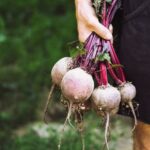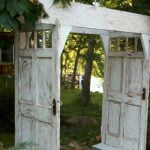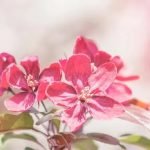Are you looking for irrigation ideas for small gardens? Maintaining proper irrigation is vital to the health and growth of plants, especially in limited spaces. Whether you have a balcony garden, a small backyard, or a patio garden, it’s essential to implement the right watering techniques to ensure your plants thrive. In this article, we will explore various irrigation methods and creative solutions tailored specifically for small gardens.
Small gardens often have unique challenges when it comes to irrigation. Limited space, varying sunlight exposure, and diverse plant needs require thoughtful planning and efficient watering systems. By understanding the importance of irrigation in small garden spaces, you can create a sustainable and efficient plan that promotes plant health while conserving water resources.
In the following sections, we will discuss the different irrigation systems suitable for small spaces, including cost-effective drip irrigation, creative watering solutions for container gardens, DIY techniques for small garden beds, and the selection of water-conserving plants. Additionally, we will explore the benefits of mulching for water retention and offer troubleshooting tips for common irrigation issues in small gardens.
Let’s dive into the world of small-scale irrigation and discover how to create an optimal watering plan for your compact outdoor oasis.
Choosing the Right Irrigation System for Small Spaces
When it comes to choosing the right irrigation system for small spaces, it’s essential to consider both the size of the garden and the specific needs of the plants. While traditional sprinkler systems may be suitable for larger gardens, small spaces often benefit from more targeted and efficient watering methods. One cost-effective solution for small gardens is drip irrigation.
Drip irrigation is an ideal choice for small gardens as it delivers water directly to the base of plants, minimizing evaporation and water waste. This method not only conserves water but also ensures that each plant receives the necessary hydration without overwatering. Additionally, drip irrigation systems are relatively easy to install and can be customized to fit any size or shape of a garden, making them a versatile option for small spaces.
In addition to drip irrigation, container gardens present unique challenges when it comes to irrigation. Creative watering solutions such as self-watering containers or using moisture-retaining potting soil can help ensure that plants in containers receive adequate moisture without excessive runoff.
These innovative approaches can be particularly beneficial for those looking for practical irrigation ideas for small gardens with limited space. By carefully selecting the right irrigation system for your small space and getting creative with container gardening techniques, you can ensure that your plants thrive while conserving water resources.
Drip Irrigation
Drip irrigation is a highly efficient and cost-effective solution for small gardens. This method delivers water directly to the base of plants, minimizing water waste through evaporation or runoff. It is especially beneficial for small spaces where traditional sprinkler systems may not be practical or efficient.
One of the main advantages of drip irrigation for small gardens is its ability to provide targeted watering, ensuring that each plant receives the right amount of moisture. This is particularly useful for gardens with a variety of plant types that have different watering needs. Additionally, drip irrigation can help prevent weed growth by delivering water directly to the plants and not the surrounding soil.
When considering drip irrigation ideas for small gardens, it’s important to choose the right components, such as tubing, emitters, filters, and pressure regulators. These components can be customized based on the layout and specific needs of your garden. Additionally, consider incorporating a timer into your drip system to automate watering schedules, providing consistent moisture levels for your plants.
Implementing a drip irrigation system in a small garden can significantly reduce water usage while promoting healthy plant growth. By carefully planning and installing a custom drip system tailored to your garden’s layout and plant selection, you can achieve efficient and sustainable watering practices.
| Advantages of Drip Irrigation | Size of Small Garden |
|---|---|
| Efficient water delivery | Customized components for different layouts |
| Prevents weed growth | Automatic timers for consistent moisture levels |
Creative Watering Solutions for Container Gardens
Container gardening is a popular choice for individuals with limited outdoor space, such as those living in apartments or urban areas. However, watering container gardens can present challenges due to the limited soil volume and potential for rapid evaporation. Fortunately, there are several creative irrigation ideas for small gardens in containers that can help maintain healthy and thriving plants.
One effective solution for watering container gardens is the use of self-watering containers. These specially designed containers feature a built-in reservoir that allows water to be stored and drawn up by the plants as needed. This not only helps conserve water by reducing evaporation, but also ensures that the plants receive a consistent supply of moisture.
Another option for creative watering solutions in container gardens is the use of drip irrigation systems specifically designed for small spaces. These systems utilize tubing with emitters that can be strategically placed around the containers to deliver water directly to the roots of the plants. This approach not only conserves water by minimizing runoff and evaporation, but also helps prevent wetting the foliage, which can reduce the risk of disease.
In addition to these specialized watering solutions, simple DIY techniques can also be effective for irrigating container gardens. For example, using a perforated plastic bottle buried near plant roots can provide slow and steady hydration. Additionally, grouping containers together based on their water needs can help make manual watering more efficient. By considering these irrigation ideas for small gardens in containers, individuals can ensure that their plants receive adequate moisture while also promoting water conservation efforts.
DIY Irrigation Techniques for Small Garden Beds
When it comes to keeping your small garden beds well-watered, there are several DIY irrigation techniques that can be both effective and affordable. One popular option is the use of soaker hoses, which are porous hoses that allow water to seep out slowly and directly into the soil.
These can be laid along the base of your plants and covered with a layer of mulch to ensure efficient water delivery. Additionally, using a rain barrel to collect and store rainwater can provide an eco-friendly and cost-effective way to irrigate your garden beds.
Another DIY irrigation technique for small garden beds is the use of olla pots, an ancient method of irrigation that involves burying unglazed clay pots in the soil near plant roots. These pots are filled with water and slowly release it into the surrounding soil, providing consistent moisture to your plants. This technique is not only effective but also adds a unique and visually appealing element to your garden.
For those looking for a more high-tech approach, installing a drip irrigation system for your small garden beds can provide precise and efficient watering. These systems use tubing with small emitters to deliver water directly to the base of each plant, minimizing waste and ensuring that each plant receives adequate hydration.
These DIY irrigation techniques offer innovative solutions for keeping your small garden beds well-hydrated without breaking the bank. From traditional soaker hoses to high-tech drip irrigation systems, there are plenty of options available for gardeners looking to create sustainable and efficient watering practices in their small spaces.
| DIY Irrigation Technique | Description |
|---|---|
| Soaker Hoses | Porous hoses that allow water to seep out slowly along the base of plants |
| Rain Barrel | Collects rainwater for eco-friendly irrigation |
| Olla Pots | Bury unglazed clay pots near plant roots to slowly release water into the soil |
| Drip Irrigation System | Tubing with emitters delivers water directly to each plant’s base for precise watering |
Selecting the Best Plants for Water Conservation in Small Gardens
When it comes to creating a sustainable and efficient irrigation plan for small gardens, selecting the right plants can make a significant difference in water conservation. By choosing plants that are well-suited to the local climate and require minimal watering, gardeners can reduce their reliance on irrigation systems and promote overall water conservation. Here are some plant options that are ideal for small gardens:
- Native Plants: Selecting native plants that are adapted to the local climate and soil conditions can help minimize water usage. These plants have evolved to thrive in specific environments and often require less watering than non-native species.
- Drought-Tolerant Varieties: Incorporating drought-tolerant plants such as succulents, lavender, and ornamental grasses can significantly reduce the need for frequent irrigation. These varieties have adapted to survive in arid conditions with minimal water requirements.
- Perennials: Choosing perennial plants that come back year after year can also contribute to water conservation efforts in small gardens. Once established, these plants typically need less frequent watering compared to annuals.
In addition to selecting the right types of plants, it’s essential for gardeners to consider factors such as soil quality, sun exposure, and maintenance requirements when designing a water-efficient garden. By focusing on low-maintenance and water-wise plant selections, small gardeners can create beautiful and sustainable landscapes while minimizing their reliance on conventional irrigation methods.
Ultimately, implementing smart plant choices into a small garden design is an integral part of developing an effective irrigation plan. By carefully selecting water-conserving plant varieties and paying attention to their individual needs, gardeners can achieve thriving landscapes that require minimal input from traditional irrigation systems.
The Benefits of Mulching for Water Retention in Small Garden Spaces
Types of Mulch for Small Gardens
When it comes to retaining water in small garden spaces, mulching is an effective and sustainable solution. There are various types of mulch that can be used in small gardens, including organic options such as straw, leaves, and wood chips, as well as inorganic options like gravel and rocks. Each type of mulch has its own benefits and drawbacks, so it’s important to consider the specific needs of your small garden when choosing the right mulch for water retention.
Benefits of Mulching for Small Garden Spaces
Mulching offers several advantages for small gardens when it comes to water retention. First and foremost, mulch acts as a barrier to prevent evaporation from the soil, keeping the moisture levels consistent and reducing the frequency of irrigation. Additionally, mulch helps to regulate soil temperature, suppresses weed growth that would otherwise compete for water with your plants, and provides essential nutrients to the soil as it decomposes.
Best Practices for Mulching in Small Gardens
To maximize the benefits of mulching for water retention in small garden spaces, it’s important to apply the mulch correctly. Make sure to lay down a layer of mulch that is at least 2-4 inches deep around your plants while avoiding direct contact with plant stems or trunks.
Also, be sure to refresh your mulch regularly to maintain its effectiveness in retaining moisture and protecting your plants from drought stress. By following these best practices for mulching in small gardens, you can create a sustainable and efficient irrigation plan that supports healthy plant growth while conserving water.
Troubleshooting Common Irrigation Issues in Small Gardens
Identifying Common Irrigation Issues
In small gardens, irrigation issues can arise that may hinder the proper watering of plants. One common problem is uneven water distribution, which can lead to some areas of the garden being overwatered while others are left parched. Another frequent issue is clogging in the irrigation system, particularly in drip systems, which can disrupt the flow of water to the plants. Additionally, faulty or damaged equipment such as hoses and sprinklers can cause water leaks and inefficient watering.
Addressing Uneven Water Distribution
To tackle uneven water distribution, it is important to regularly inspect the irrigation system and make necessary adjustments. This may involve repositioning sprinklers or adjusting the water pressure in drip systems to ensure that all areas of the garden receive adequate moisture. Installing a timer or using smart irrigation controllers can also help regulate watering schedules and prevent overwatering in certain sections.
Preventing Clogging and Leaks
Clogging in drip irrigation systems can be minimized by regularly flushing out the lines and using filters to prevent debris from entering the system. Inspecting hoses and connectors for any signs of wear and tear is essential in preventing leaks that can lead to water wastage. Furthermore, regularly cleaning and maintaining the entire irrigation setup will help prevent common issues from occurring.
By addressing these common irrigation issues in small gardens, gardeners can ensure that their plants receive consistent and efficient watering, promoting healthy growth while conserving water resources.
Conclusion
In conclusion, maintaining a sustainable and efficient irrigation plan is crucial for the successful growth of plants in small gardens. By selecting the right irrigation system, such as drip irrigation, and implementing creative watering solutions for container gardens, gardeners can effectively conserve water while ensuring their plants receive the necessary hydration. Additionally, utilizing DIY irrigation techniques for small garden beds and selecting water-conserving plants can further contribute to a more efficient use of water in small garden spaces.
Furthermore, incorporating mulching into the gardening routine can aid in retaining moisture and reducing evaporation, thereby maximizing the effectiveness of irrigation efforts. It is important to troubleshoot any common irrigation issues that may arise in small gardens to ensure that water is being utilized efficiently. By implementing these strategies, gardeners can create a sustainable and efficient irrigation plan tailored to the specific needs of their small gardens.
Frequently Asked Questions
What Is the Best Irrigation System for a Small Garden?
The best irrigation system for a small garden would depend on various factors such as the layout of the garden, the types of plants being grown, and the local climate. Drip irrigation is often recommended for small gardens as it delivers water directly to the base of plants, minimizing waste and evaporation.
What Is the Cheapest Way to Irrigate a Garden?
The cheapest way to irrigate a garden is by using a soaker hose or drip irrigation system. Soaker hoses are affordable and can be easily laid out in the garden to deliver water directly to the soil around plants. Drip irrigation systems also offer cost-effective and efficient watering.
How Do You Irrigate a Small Garden?
Irrigating a small garden can be done in several ways, including hand-watering with a watering can or hose, using a soaker hose or drip irrigation system, or installing a simple sprinkler system. The key is to ensure that the plants receive enough water without wasting it through run-off or evaporation.
Regular monitoring of soil moisture is important for effective irrigation in a small garden.

Welcome to my gardening blog! I am passionate about plants and enjoy sharing my knowledge and experiences with others. In this blog, I will write about everything related to gardening, from tips on how to get started to updates on my own garden projects.





